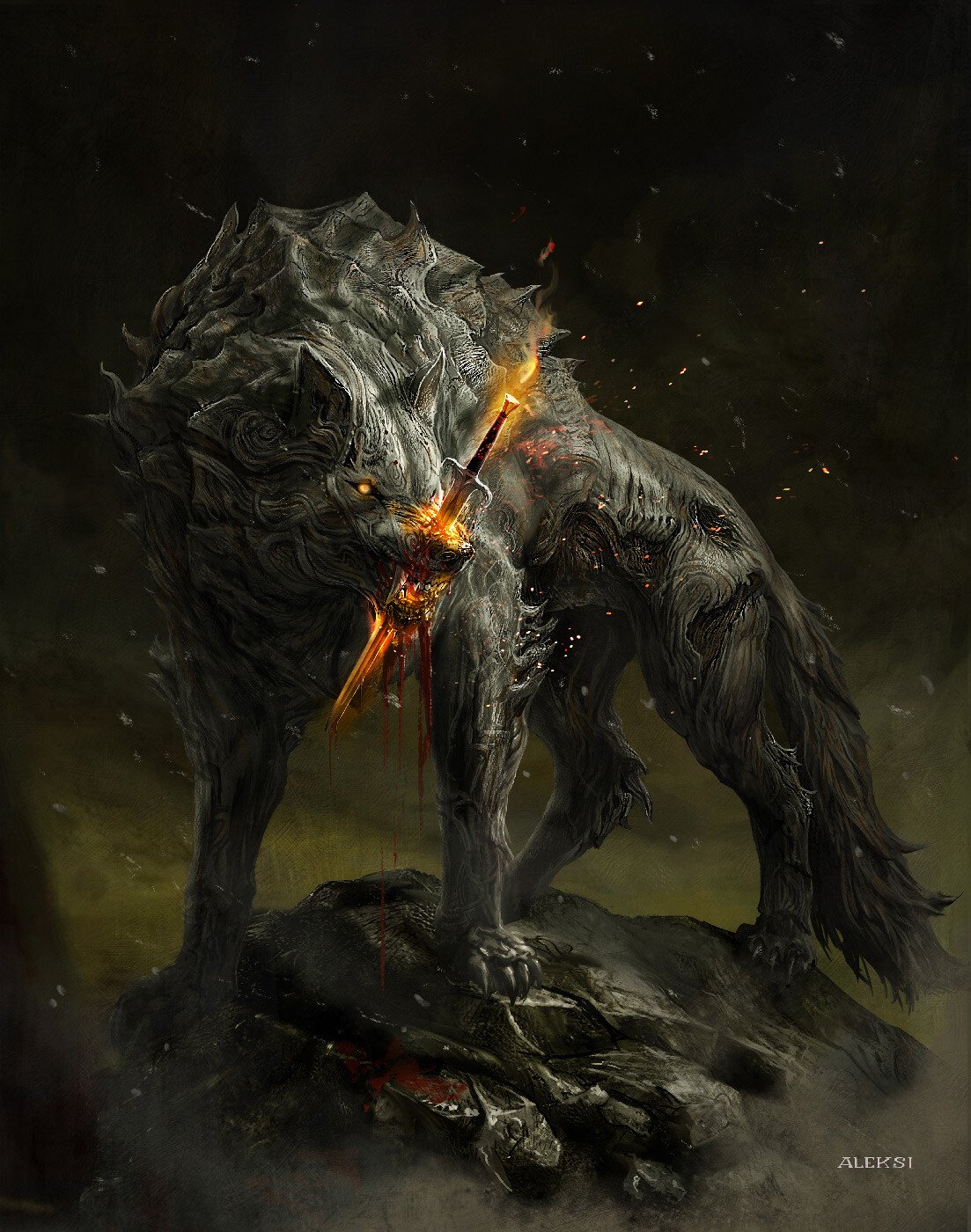Fenrir — The Great Wolf of Norse Mythology
A saga of destiny, strength, betrayal, defiance, and the Vikings' bond with wolves.
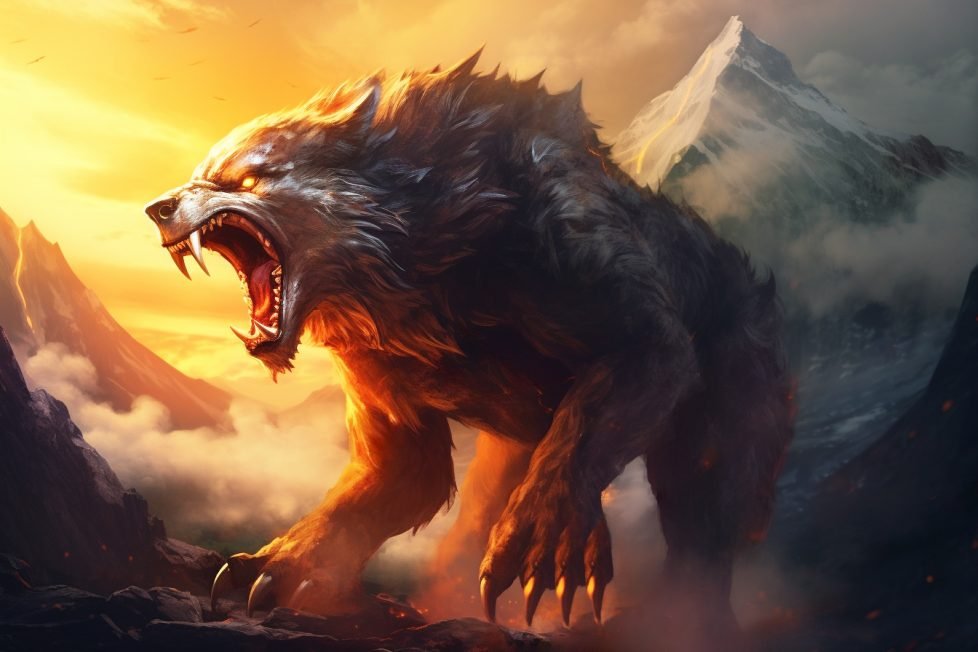
A saga of destiny, strength, betrayal, defiance, and the Vikings' bond with wolves.

Table of Contents
ToggleIn the land of ice, at the very heart of Norse mythology, dwells a creature of awe and terror: Fenrir. Pronounced ‘Fen-rear’, this giant wolf goes by many names, including Fenris Wolf, Hrodvitnir, or Vanargand. The name Fenrir is derived from the concept of a fen-dweller, a marshland creature often associated with evil spirits and danger. It can also mean “creature of expectation,” hinting at the prophecy that foretold Fenrir’s role in the destruction of the gods.
Born to the trickster god Loki and the giantess Angerboda, Fenrir is one of three children destined to bring doom to the gods at Ragnarok — the end of the world in Norse mythology. According to myth, Fenrir’s strength was so great that the gods had to bind him, fearing his growing power.
Fenrir’s tale is spread across various texts and artifacts, including the Poetic Edda and the Prose Edda. However, pinning down the exact origins of the myth can be tricky. These texts were penned by Christian scholars, who may have altered or misinterpreted the original pagan stories. Some earlier references to Fenrir can be found in runestones, bracteates, skaldic poems, and sagas, like the poem Malshattakvaedi, the Tullstorp Runestone, and the Trollhattan bracteate.
Fenrir’s tale may have been influenced by other cultures, such as the Greek legend of Prometheus, who was also bound by the gods. This connection between cultures and stories adds a layer of intricacy to the Fenrir myth.
As a son of Loki, enemy of Odin, and a harbinger of the end of the world, Fenrir’s story is rich in hidden meanings and symbolism.
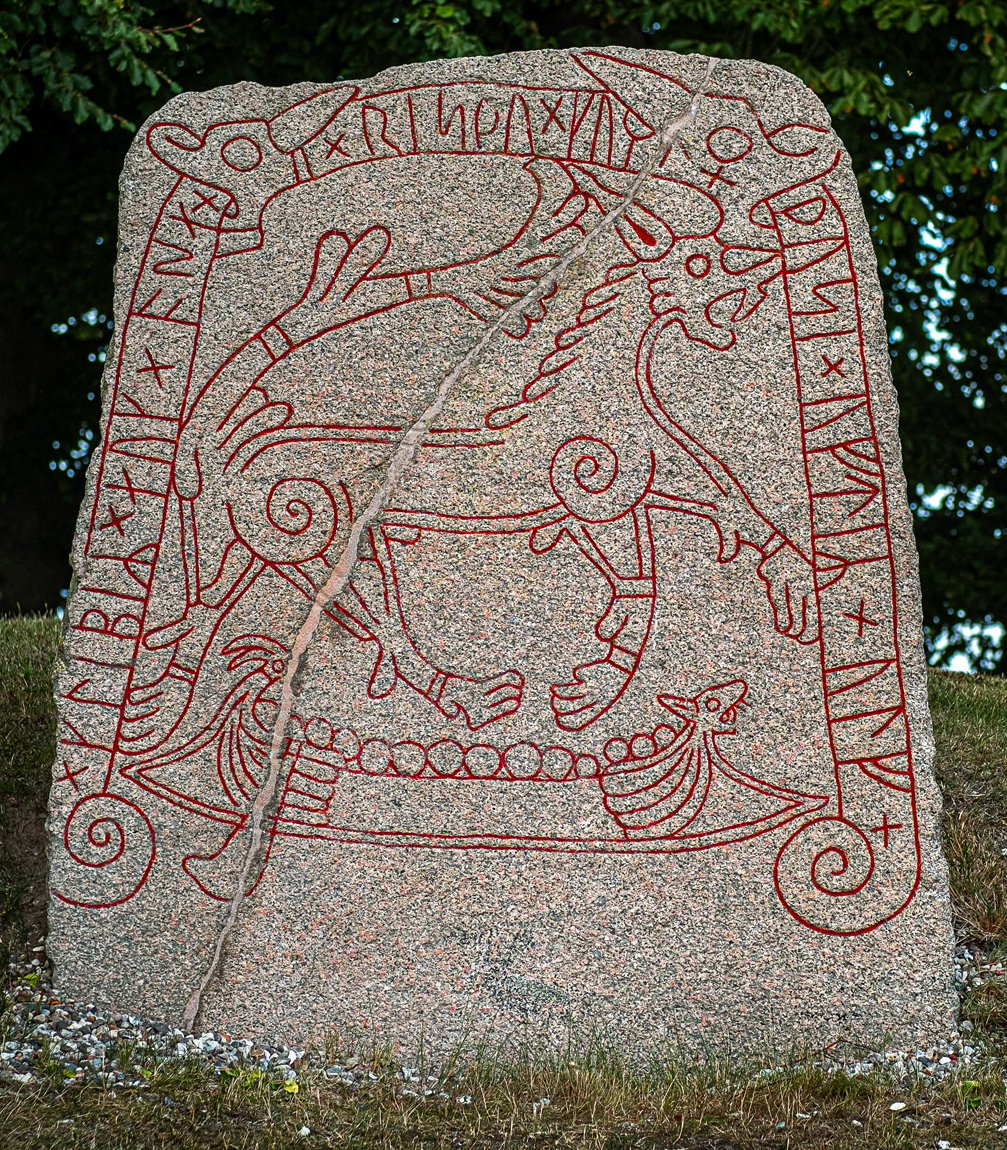
In the shadowy land of Jotunheim, the land of the giants in Norse cosmology, Fenrir was born to Loki, the god of mischief, and Angerboda, a giantess. His siblings were Jormungand, the World Serpent, and Hel, the goddess of the underworld.
The gods soon learned of Loki’s offspring from a prophecy that spoke of disaster to the world and themselves. Driven by fear and the need to control fate, they decided to bring these creatures to Asgard, the home of the gods, to deal with them accordingly.
The gods recognized Fenrir’s growing strength and realized they needed to restrain him. They asked the dwarves, known for their craftsmanship, to forge a special chain called Gleipnir. Thin and soft like a ribbon, yet magical and unbreakable, Gleipnir was made from six impossible things: the sound of a cat’s footsteps, the beard of a woman, the roots of a mountain, the sinews of a bear, the breath of a fish, and the spit of a bird.
The gods brought Gleipnir to Fenrir, disguising their intent as a game. They challenged him to break it. Fenrir, sensing deceit, demanded that one of the gods place his hand in his mouth as a pledge of good faith. Only Tyr, son of Odin, knowing he would lose his hand, dared to do so.
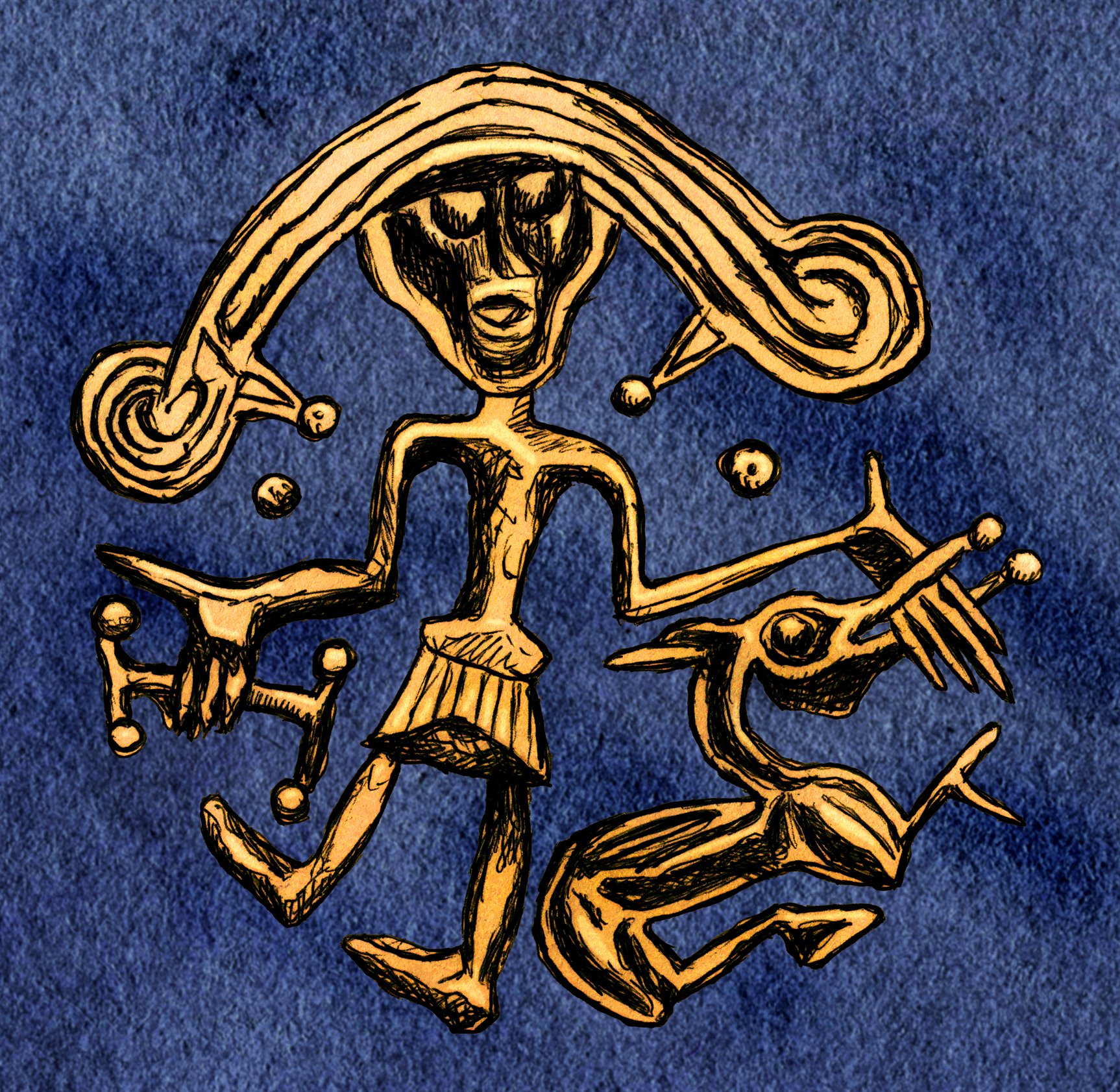
Fenrir allowed himself to be bound by Gleipnir, trusting Tyr’s gesture. When he found that Gleipnir was too strong to break, he realized the deception and bit off Tyr’s hand. The gods then anchored Gleipnir to a massive rock called Gjoll and secured it with another rock, Thviti. To prevent Fenrir from howling, they placed a sword in his mouth. There he remained, bound and silenced, until Ragnarok.
Fenrir’s role in Ragnarok, the final battle against the gods, was monumental. Breaking free from his bonds, he joined Loki and his allies. In an epic battle, he swallowed Odin whole but was slain by Odin’s son Vidarr, who avenged his father by stabbing Fenrir in the heart.
Fenrir’s lineage continued with his two sons, Skoll and Hati. These giant wolves chased the sun and the moon, destined to catch them at Ragnarok and plunge the world into darkness.
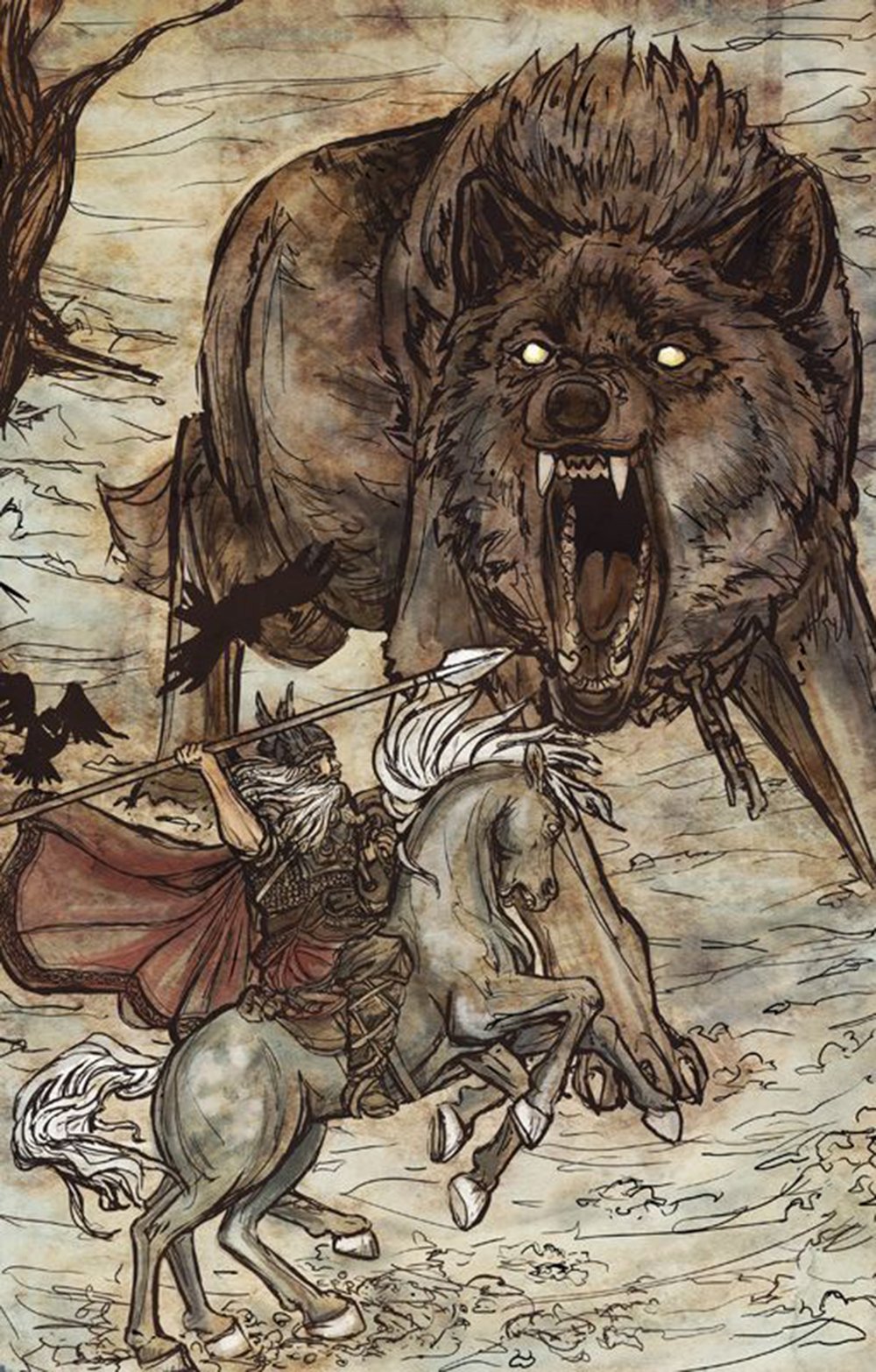
Fenrir’s story is rife with themes of fate, destiny, and chaos. His very existence, foretold by prophecy, symbolizes the inevitability of destiny. His role in the Ragnarok and the havoc he wreaks represents the unpredictability of nature as a force that threatens human stability.
But Fenrir’s symbolism is not all dark and fearsome. In a more positive light, he embodies independence, courage, strength, and persistence. His story is a testament to fierceness and resilience in the face of adversity. He fought against his destiny, even when bound and deceived by the gods.
Some interpretations view Fenrir as a victim who was wronged in an attempt to prevent him from reaching his potential. The gods’ fear and the deceptive way they bound him can be seen as an unjust act against a creature who was merely following his own path.
Fenrir’s symbolism is multifaceted and rich. From fear and destruction to courage and victimhood, his story conveys various meanings that resonate on different levels.
In the celestial sphere, Fenrir’s name adorns one of Saturn’s moons, discovered in 2004. This moon, with its irregular shape and retrograde orbit, seems to mirror Fenrir’s symbolism of going against the grain.
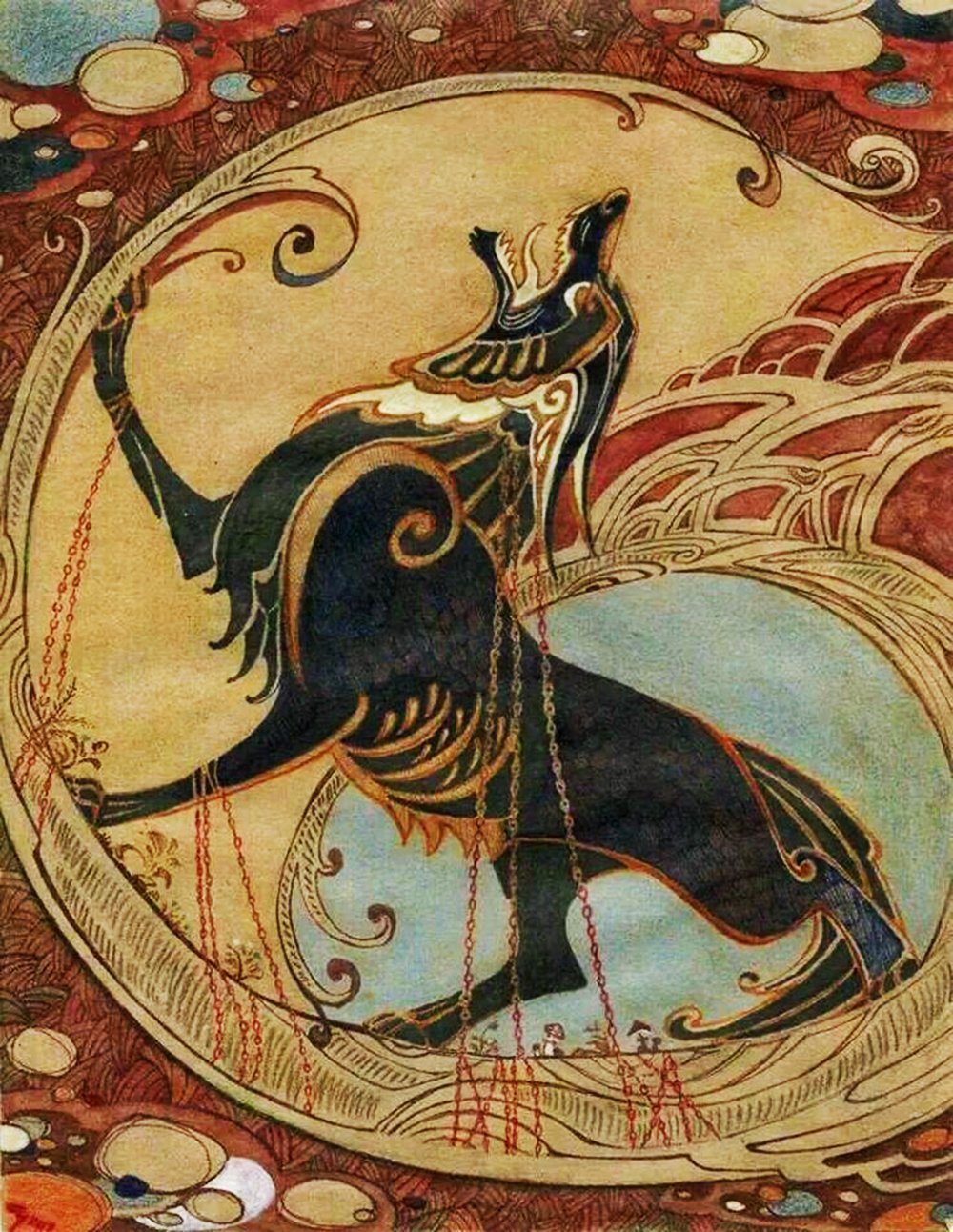
In Norse society, wolves were linked to warriors and kings. The elite Viking warriors known as the Ulfhednar were said to wear wolf skins, channeling the animal’s ferocity in battle. Kings and chieftains used wolf symbolism to enhance their status and strength.
But the wolf was also viewed as a creature of terror and chaos. Fenrir’s myth, with its themes of destruction and fate, echoes the darker aspects of the wolf’s image. His binding and eventual role in Ragnarok reflect the struggle between wild nature and human control, a tension that resonated deeply in Viking society.
Norse raiders were likened to “fearful wolves” by Simeon of Durham, an English monk. The comparison was apt, as Vikings were known for their ruthless raids and warrior prowess. Just as wolves hunted in packs, so too did the Vikings, united in purpose and fierce in battle.
The Vikings’ relationship with wolves was many-sided. On one hand, they admired the wolf’s strength, cunning, and loyalty to the pack. On the other, they feared its brutality and unpredictability. This duality is reflected in Fenrir’s story, where the wolf is both a symbol of primal power and a harbinger of doom.
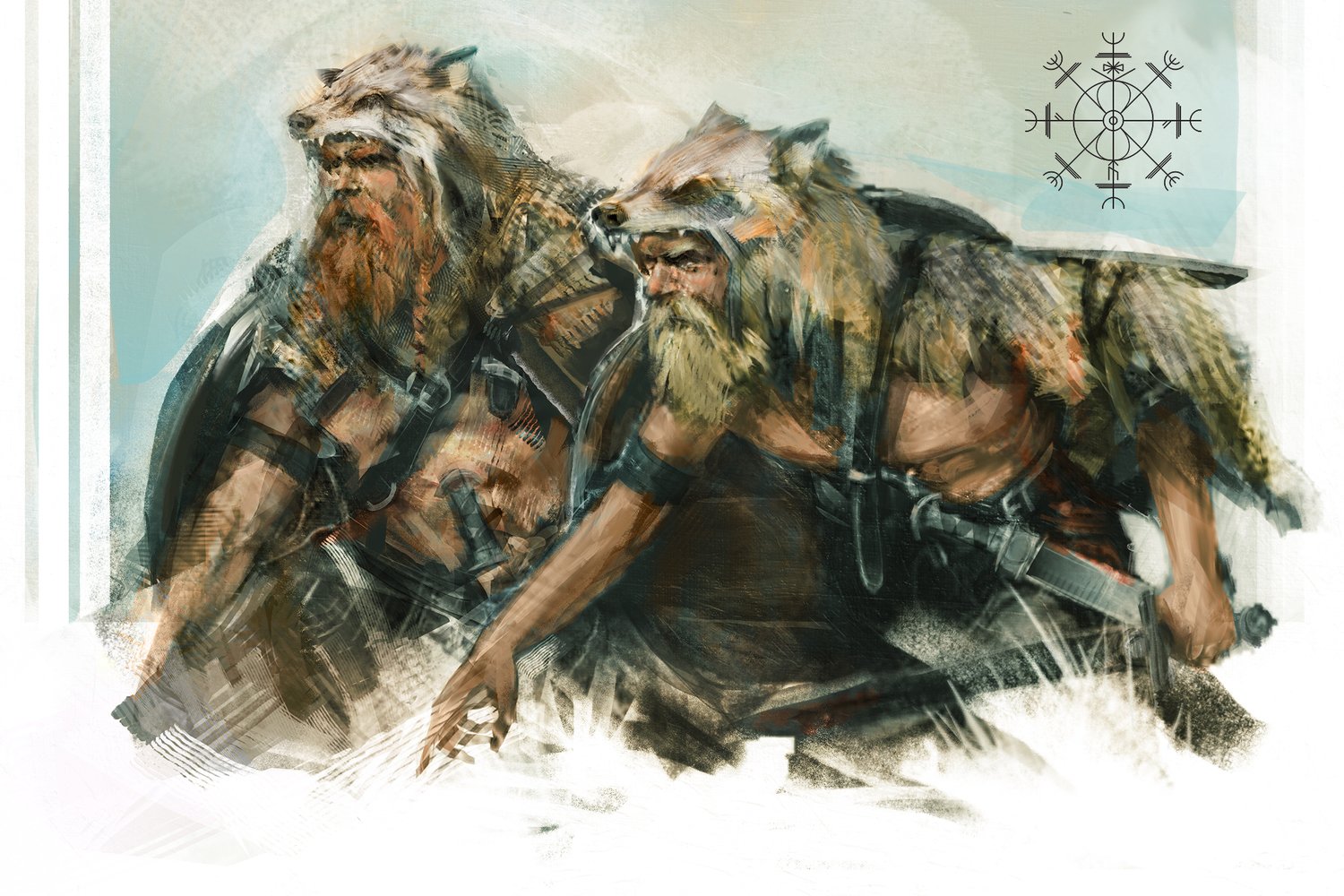
The story of Fenrir resonates with profound philosophical concepts. One such idea is Amor Fati, or love of fate, which has its roots in stoic teachings.
Fenrir was bound by a prophecy he could not escape. He was both the destroyer and the destroyed at Ragnarok, playing a dual role in the cycle of life and death. Despite knowing his fate, Fenrir fought for his will, even in the face of certain death. His story can be seen as a source of motivation and encouragement to accept our fate, recognizing that some things are beyond our control.
But accepting fate does not mean surrendering to it passively. Fenrir’s fierce battle, even against insurmountable odds, is an example of living life to the fullest and following our own path. His courage in facing difficulties and dangers can serve as an inspiration to embrace one’s journey, no matter the obstacles.
Fenrir’s acceptance and defiance of his fate parallel the attitude of Amor Fati — a call to embrace fate while striving with determination and courage. It’s about finding meaning and purpose in the inevitable, turning what may seem like a curse into a source of strength.
The tale of Fenrir is a reflection of a universal human struggle. The tension between fate and free will, between acceptance and defiance. It is a theme that transcends cultures and times.
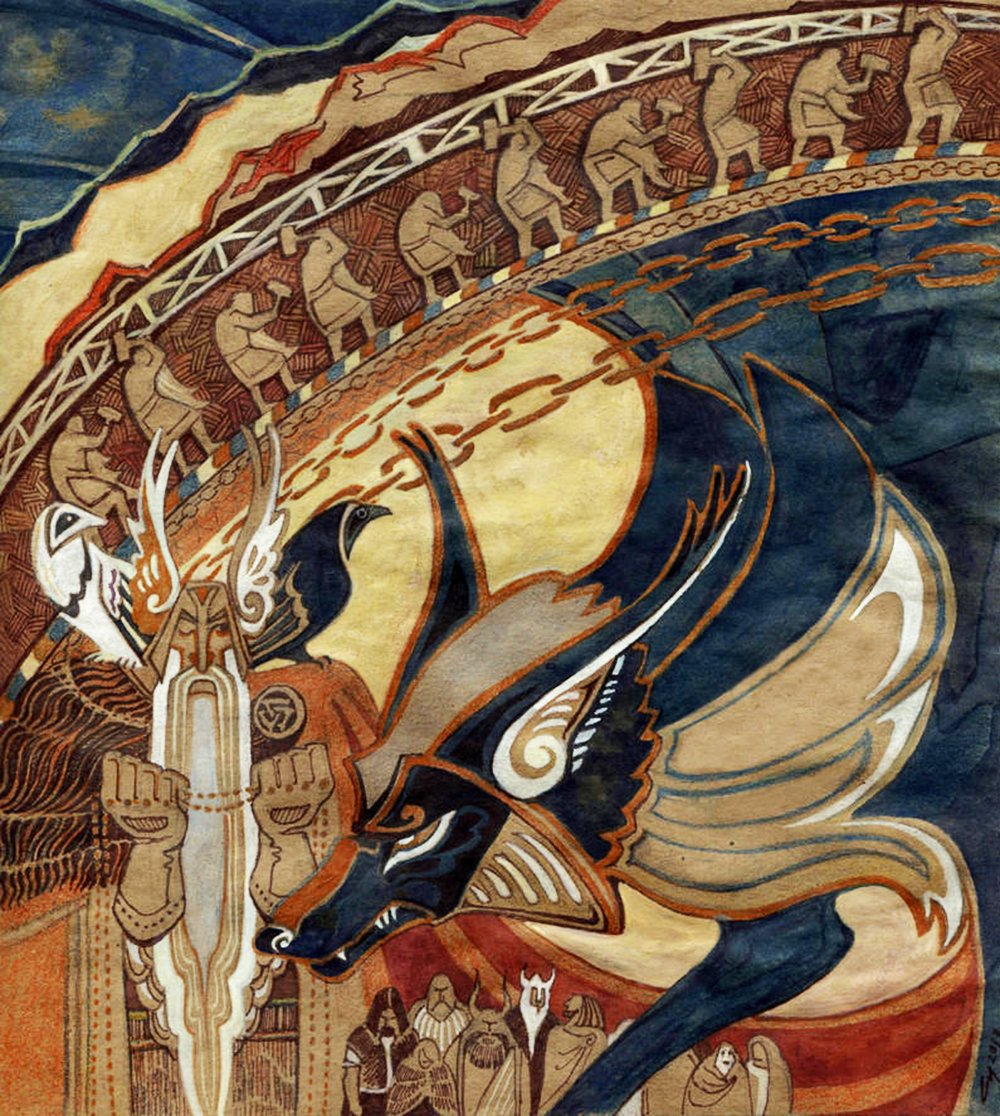
From ancient sagas to modern literature and entertainment, Fenrir’s story is a captivating blend of strength, defiance, fate, and complexity.
He is a symbol of destiny and a reflection of the human struggle with the inevitable. Fenrir’s binding by the gods illustrates the tension between order and chaos. But he’s also an emblem of courage, resilience, and the indomitable spirit to fight against all odds.
The story of Fenrir is meant to remind us of our own strength and the eternal dance between fate and free will. Through Fenrir, we are invited to face our destiny with courage, to embrace our path with determination, and to find meaning and beauty in the complexity of life.
